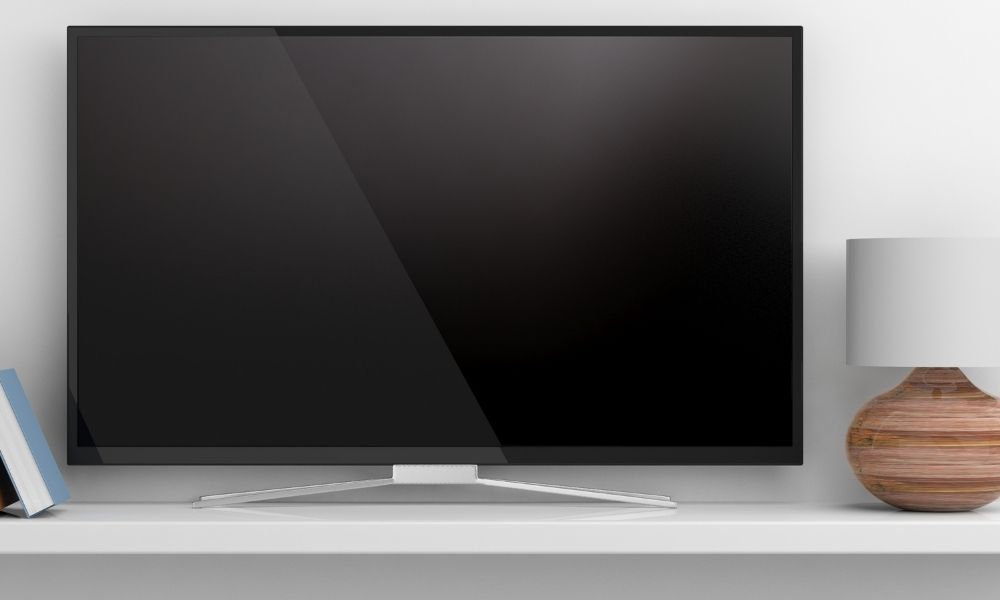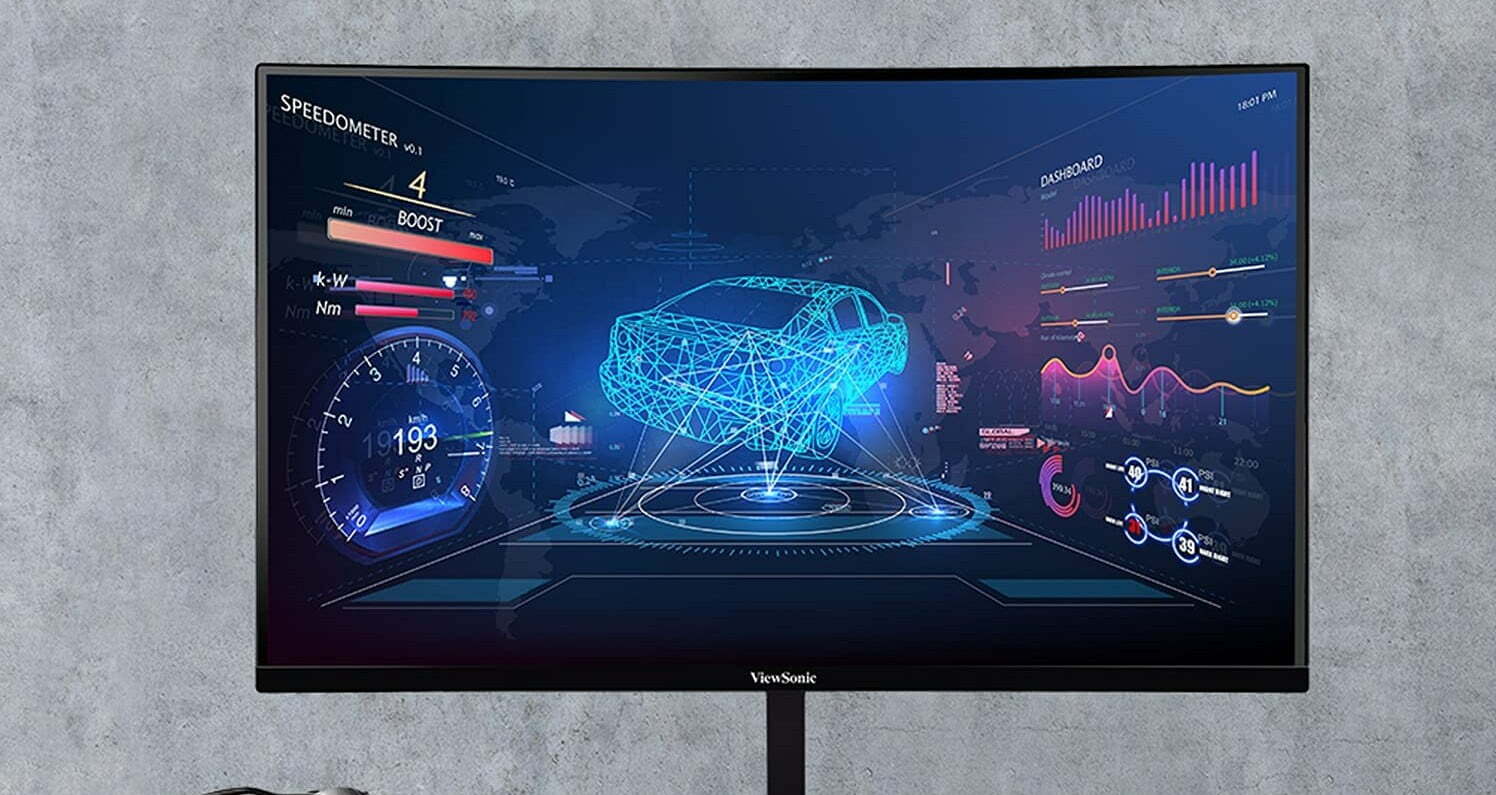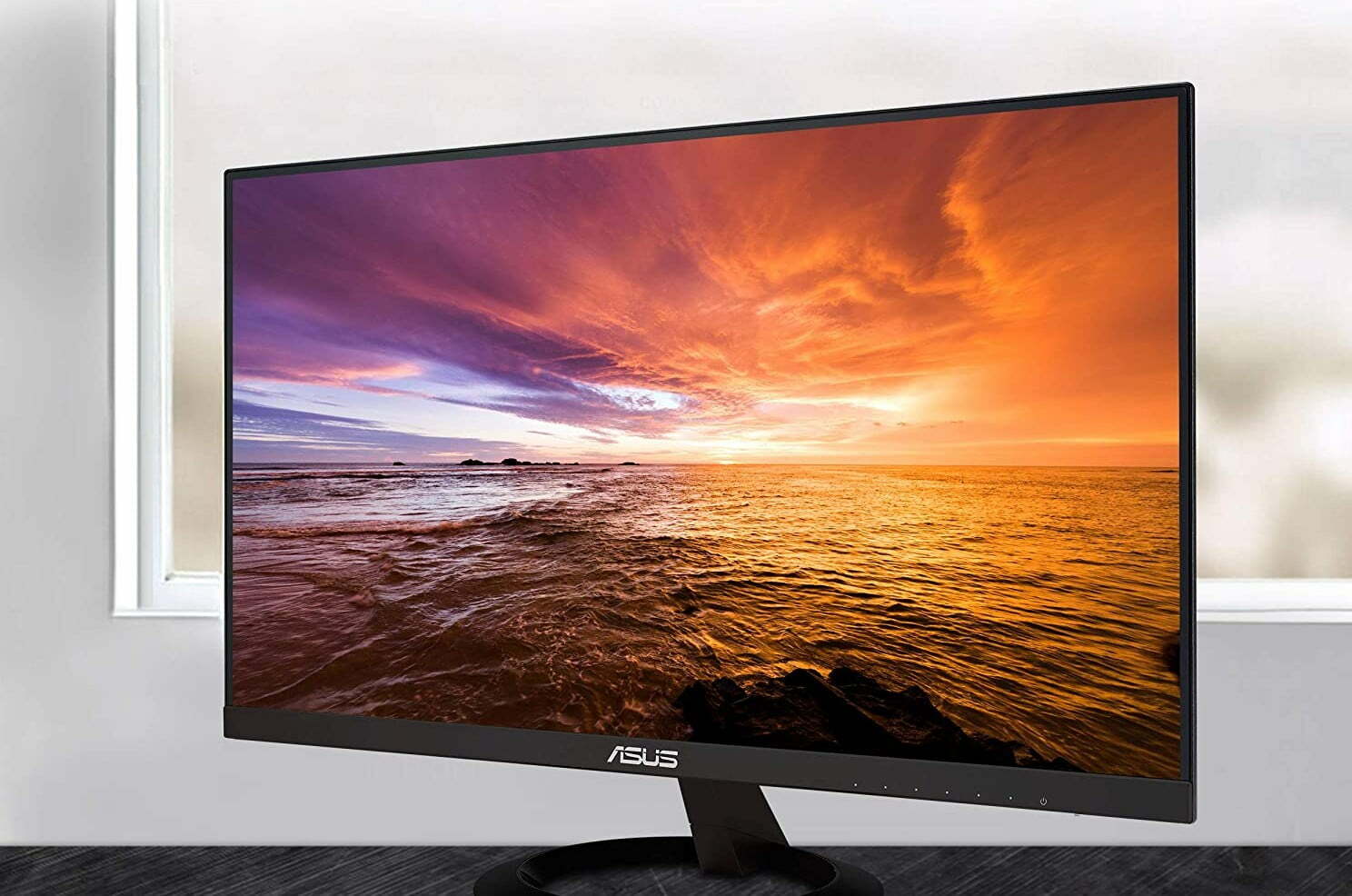Key Takeaways:
- The easiest monitor fix is power cycling and checking cable connections.
- Faulty RAM usually does not cause monitor problems.
- Sometimes monitor replacement is the best option.
Time to Complete: 30-60 minutes
Difficulty: Moderate
Tools Needed: None
Steps: 8
If you power on your monitor just to be met with a black screen, then don’t fret! There are various reasons this may be happening to your computer monitor, and fortunately, there are a variety of fixes you can try to solve the problem. Keep reading to learn more about fixing a monitor that powers on but doesn’t display anything.
What to Do When Your Computer Monitor Doesn’t Display Anything
Just because your favorite computer monitor doesn’t display anything after you turn it on doesn’t necessarily mean you need a replacement.
But, if you do see your screen, yet the light is bleeding outside the edges, you have a different problem, which you can easily fix blacklight bleed with our resource guide.
Steps
Follow these steps to fix some of the most common problems with monitors not displaying anything or giving you a “Cable Not Connected” or “No Input” error message.
- Check Your Monitor’s Power. Before troubleshooting anything else, make sure your monitor is powered on. If the screen is actually getting power, you should see an indicator light either on or around the screen’s power button. If your monitor is getting power, you can also try to bring up its menu settings. Even with nothing connected, you’ll still be able to adjust settings in the monitor’s menus. If a menu doesn’t appear, then you may have a problem with the monitor itself. Warning: If a menu doesn’t appear, then you may have a problem with the monitor itself
- Turn The Monitor Off and On Again. Yes, turning the monitor off and on again is a completely valid approach, despite how often the process joked about. Sometimes your computer monitor just needs a soft reset, which can be achieved with power cycling.
- Check Your Connections. If your monitor is powering on and off without trouble, then your next easiest step is to make sure all of your display cables are securely connected to the monitor, like you would do when troubleshooting no signal issues with your monitor. It’s best to physically check each connection with your fingers since a visual inspection may not reveal slightly disconnected cables. It can also be helpful to unplug and reconnect the cables one by one to ensure everything is tight and secure. Tip: It’s best to physically check each connection with your fingers since a visual inspection may not reveal slightly disconnected cables
- Check Display Settings. Sometimes, especially on older versions of Windows, setting the display resolution higher than what your monitor can support will cause a blank screen to appear. To bypass this problem, you’ll need to restart Windows in safe mode. Starting in safe mode will automatically open your computer in a lower resolution, allowing you to navigate to your computer’s display settings and lower the resolution yourself. Be sure you fully understand how to boot into safe mode before doing it since your actions in that mode can have unintended consequences. Warning: Be sure you fully understand how to boot into safe mode before doing it since your actions in that mode can have unintended consequences.
- Related Post: How to Fix Monitor Screen Burn-In Issues
- Related Post: How to Fix the Dirty Screen Effect on Your Monitor
- BIOS and Recovery. This step applies specifically to scenarios when you see an initial boot screen after turning on your PC and then a blank screen once Windows starts to load. This can indicate a problem with the operating system itself. If this is the case, then boot your computer into safe mode and try the System Restore and Automatic Repair option first. If that doesn’t work, then you can select the Reset or Refresh My PC option, which will preserve all of your data while still reinstalling Windows. Tip: try the System Restore and Automatic Repair option first
- Check Your Hardware. In some cases, there’s a problem with other connected hardware and peripherals like your keyboard or mouse. Try disconnecting your keyboard and mouse one by one to see if one of those is causing the blank screen problems. You may also want to closely inspect each of the physical ports where cables plugin. If you or someone else has mistakenly tried to plug a cable into the wrong port, it can damage the connectors or bend the ports. If you find problems with the ports, we recommend taking your monitor to a computer repair shop to get it fixed. Tip: we recommend taking your monitor to a computer repair shop to get it fixed
- Related Post: How to Test Your Monitor for Input Lag
- Related Post: How to Fix Display Stripes on Your Monitor
- Replace Your Video Card. If you have a dedicated video graphics card installed on your PC, it may be the culprit in your black screen problem. If you’re technically savvy and feel comfortable opening up your PC case, you can check to make sure the PCI connection is secure. More likely than not, though, your video card is outdated and simply needs to be replaced.
- Replace Your Monitor. If all else fails, you may just need to replace the monitor entirely. It’s often more cost-effective to purchase a new monitor over taking it to a repair shop because of how affordable modern-day monitors are. Tip: It’s often more cost-effective to purchase a new monitor over taking it to a repair shop because of how affordable modern-day monitors are
STAT:
9.1% of all computer monitors offer 1920 x 1080 pixel resolution. (Source: https://gs.statcounter.com/screen-resolution-stats)
References:
- https://en.wikipedia.org/wiki/Computer_monitor
- https://en.wikipedia.org/wiki/Video_card
- https://www.techwalla.com/articles/how-does-a-computer-monitor-work
- https://edu.gcfglobal.org/en/computerbasics/basic-troubleshooting-techniques/1/
- https://support.microsoft.com/en-us/windows/start-your-pc-in-safe-mode-in-windows-10-92c27cff-db89-8644-1ce4-b3e5e56fe234
- https://www.computerhope.com/jargon/v/video-card.htm




































![Best 27 Inch Computer Monitor in [year] 27 Best 27 Inch Computer Monitor in 2025](https://www.gadgetreview.dev/wp-content/uploads/how-to-buy-the-best-computer-monitor.jpg)
![Best BenQ Monitors in [year] 28 Best BenQ Monitors in 2025](https://www.gadgetreview.dev/wp-content/uploads/best-benq-monitor-image.jpg)
![Best ASUS Monitors in [year] 29 Best ASUS Monitors in 2025](https://www.gadgetreview.dev/wp-content/uploads/best-asus-monitor-image.jpg)
![Best Dell Monitors in [year] 30 Best Dell Monitors in 2025](https://www.gadgetreview.dev/wp-content/uploads/best-dell-monitor-image.jpg)
![Best HP Monitors in [year] 31 Best HP Monitors in 2025](https://www.gadgetreview.dev/wp-content/uploads/best-hp-monitor-image.jpg)
![Best Lenovo Monitors in [year] 32 Best Lenovo Monitors in 2025](https://www.gadgetreview.dev/wp-content/uploads/best-lenovo-monitor-image.jpg)
![Best ViewSonic Monitors in [year] 33 Best ViewSonic Monitors in 2025](https://www.gadgetreview.dev/wp-content/uploads/best-viewsonic-monitor-image.jpg)
![Best Gigabyte Monitors in [year] 34 Best Gigabyte Monitors in 2025](https://www.gadgetreview.dev/wp-content/uploads/best-gigabyte-monitor-image.jpg)
![Best Monitors for PS4 Pro Gaming in [year] 35 Best Monitors for PS4 Pro Gaming in 2025](https://www.gadgetreview.dev/wp-content/uploads/best-monitors-for-ps4-pro-image.jpg)
![Best Monitor for Xbox Series X in [year] 36 Best Monitor for Xbox Series X in 2025](https://www.gadgetreview.dev/wp-content/uploads/best-monitor-for-xbox-series-x-image.jpg)
![Best Acer Monitors in [year] 37 Best Acer Monitors in 2025](https://www.gadgetreview.dev/wp-content/uploads/best-acer-monitor-image.jpg)
![Best MSI Monitors in [year] 38 Best MSI Monitors in 2025](https://www.gadgetreview.dev/wp-content/uploads/best-msi-monitor-image.jpg)
![Best SAMSUNG Monitors in [year] 39 Best SAMSUNG Monitors in 2025](https://www.gadgetreview.dev/wp-content/uploads/best-samsung-monitor-image.jpg)
![Best LG Monitors in [year] 40 Best LG Monitors in 2025](https://www.gadgetreview.dev/wp-content/uploads/best-lg-monitor-image.jpg)
![Best AOC Monitors in [year] 41 Best AOC Monitors in 2025](https://www.gadgetreview.dev/wp-content/uploads/best-aoc-monitor-image.jpg)
![Best Philips Monitors in [year] 42 Best Philips Monitors in 2025](https://www.gadgetreview.dev/wp-content/uploads/best-philips-monitors-image.jpg)
![Best Monitors For PUBG in [year] 43 Best Monitors For PUBG in 2025](https://www.gadgetreview.dev/wp-content/uploads/best-monitor-for-pubg-image.jpg)
![Best Stream Decks in [year] 44 Best Stream Decks in 2025](https://www.gadgetreview.dev/wp-content/uploads/best-stream-deck-image.jpg)
![Best Monitors for Streaming in [year] 45 Best Monitors for Streaming in 2025](https://www.gadgetreview.dev/wp-content/uploads/best-monitor-for-streaming-image.jpg)
![Best Monitors For Flight Simulator in [year] 46 Best Monitors For Flight Simulator in 2025](https://www.gadgetreview.dev/wp-content/uploads/best-monitor-for-flight-simulator-image.jpg)




















